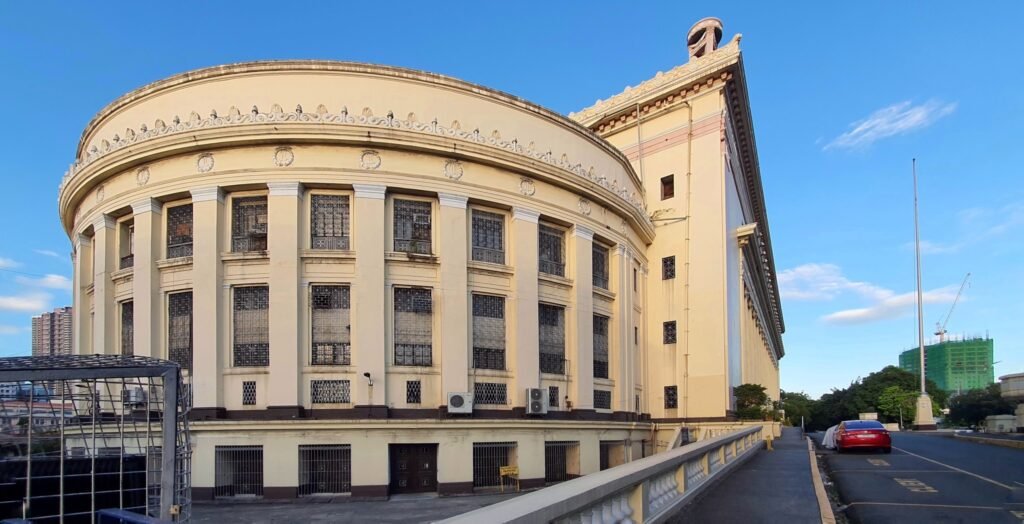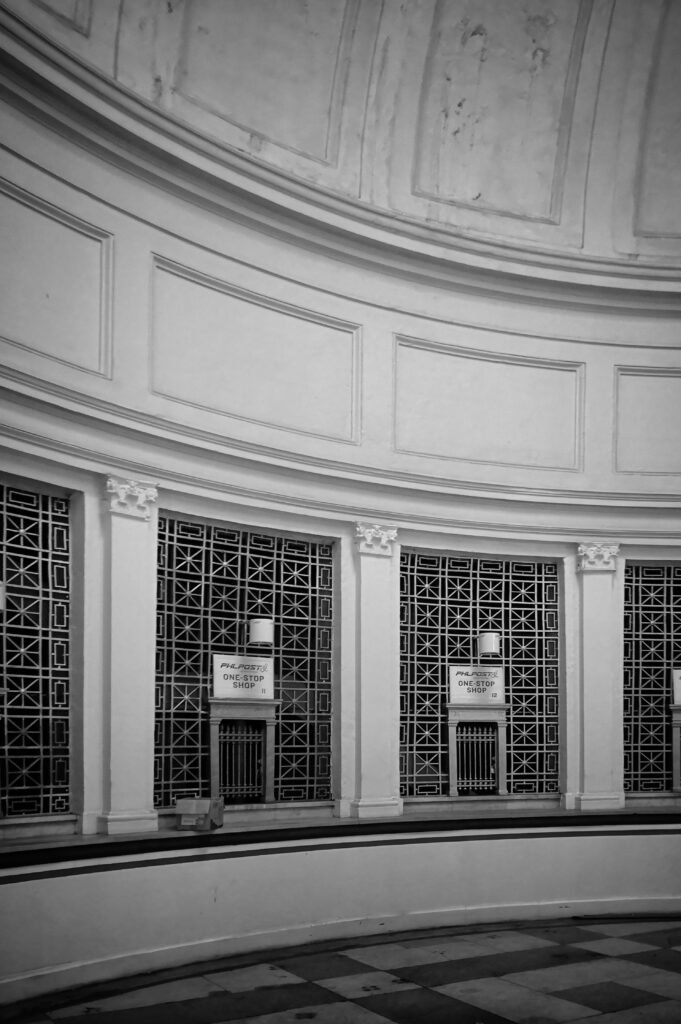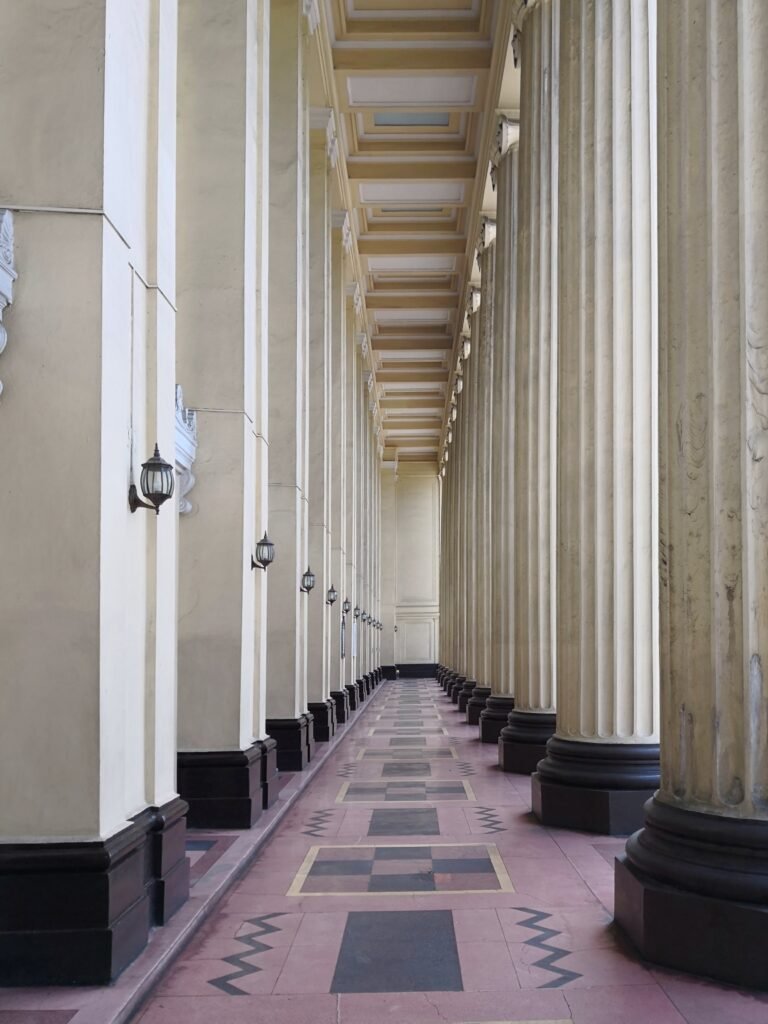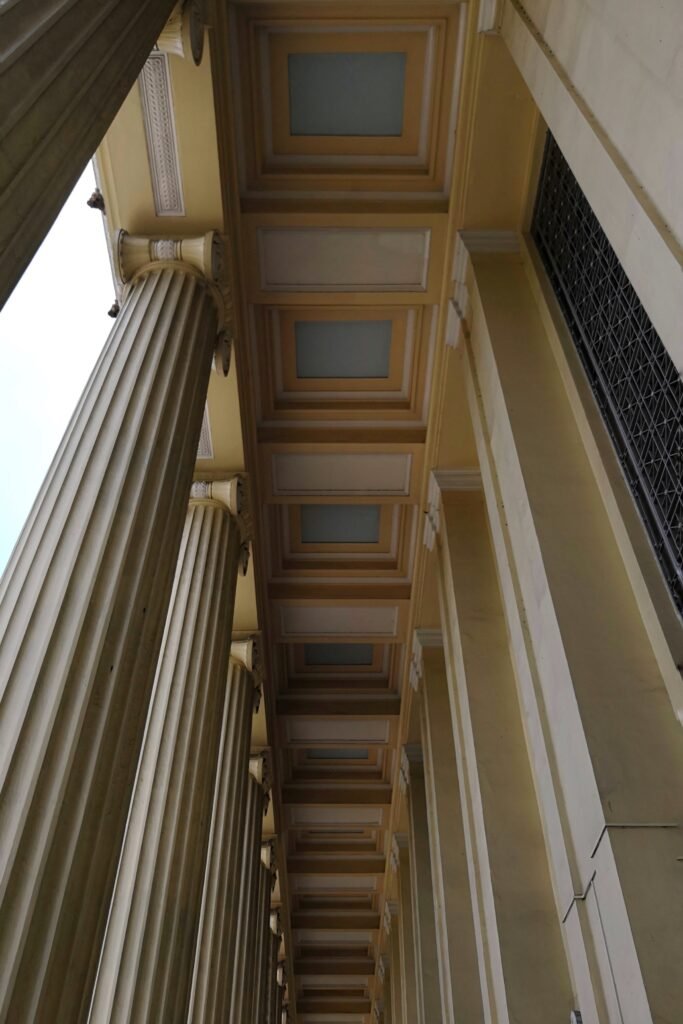Introduction and Interview Gabrielle de la Cruz
Images Patrick Kasingsing
For nearly a century, the Manila Post Office building has preserved the age-old practice of sending and receiving letters and parcels by serving as the headquarters of the Philippine Postal Corporation. The neoclassical structure was first constructed in 1926 and was designed by architects Juan Arellano and Tomas Mapua. It is considered among both architects’ most prominent works and remains a symbol of their contribution to Philippine architecture. The building’s Ionic columns and notable form have graced many a Pasig river photo, surviving wars and the onslaught of the digital age where mail has made the transition from paper to screen.


On May 21, 2023, a massive fire sadly hit the Post Office building. Reports say that the fire started around 11:00 PM and originated from the General Services Office in the basement, spreading to the building’s floors. With over 80 firetrucks arriving, it was only around 6:30 on the morning of May 23 that the fire was completely put out. The damages are estimated to be worth P300 million as of writing. Postmaster General Luis Carlos said that the building’s ceiling had fallen down and that letters, parcels, and the stamp collection have been destroyed. The fire’s origin is still unknown and the future of the currently devastated structure remains at risk. What is next for the grand old dame of the Pasig River?


To further heighten public awareness of the importance of the Manila Post Office and to help stir conversations on the structure’s rebirth early, we invited architects and heritage advocates to share their two cents on the building’s present situation and suggest measures that are vital to keeping the landmark alive.
Kanto: What are your thoughts on the recent Post Office fire?
Gio Abcede, Vice President of the Heritage Conservation Society and Associate Member of ICOMOS Philippines: While this news is definitely alarming, it’s important to note how it’s not even the only heritage site put at risk due to fire in recent memory, examples being right across the river along Escolta years prior. Our remaining culturally significant buildings have already been under threat from demolition or being disregarded when it comes to neighboring construction projects that encroach heritage zones. Fire hazards being thrown into the mix adds another dimension to be concerned about.
Stephen Pamorada, Lead Convenor of Manileńos for Heritage (M4H) and Heritage Consultant, The Heritage Collective: What happened to the Post Office is very devastating in so far as the architectural heritage of Manila is concerned. How do we move forward from this? We should keep an eye on what’s going to happen to this building. Plenty of people are concerned about whether the fire was intentional. We cannot confirm anything as of now, but whatever our technical expertise, professional backgrounds, advocacies, and passion for cultural heritage are, we need to come together so we can discuss what our next steps will be. We also have to coordinate our steps with the government agencies concerned with the Manila Post Office, especially the Philippine Postal Corporation and the National Commission for Culture and the Arts (NCCA).
We all know that the Post Office is declared by the National Museum as an important cultural property and a national landmark by the National Historical Commission of the Philippines (NHCP). There are corresponding benefits given these designations in accordance with the National Cultural Heritage Act or Republic Act 10066. We need to apply all these to the future plans for the building.
Architect Arts Serrano, principal of One Zero Design Co.: The Manila Post Office fire is completely heartbreaking. There are no words that can describe how we feel about it, and it saddens us more to think how this was something that could have been avoided.
In the past decade alone, we have seen a number of fires engulfing our built heritage. The Land Management Bureau fire, which then spread towards Juan Luna Building, the PNB Building, and the Sta. Cruz buildings along Escolta, and even the Metropolitan Theater just in the past year.
Our heritage buildings are at a higher risk because most of them pre-date our building codes. It is our government’s task to provide support as mandated by Republic Act 10066.
The Manila Post Office building was declared an “important cultural property” (ICP) by the National Museum of the Philippines in 2018. This designation means the structure has “exceptional cultural, artistic, and historical significance to the Philippines”, and is to receive government funding for its protection, conservation, and restoration.
What makes the Post Office Building an irreplaceable landmark, aside from the fact that it is already considered an Important Cultural Property?
Abcede: The Manila Central Post Office Building is one of the most notable & recognizable works of Juan Arellano. Aside from being an Important Cultural Property, it is an exceptional local example of the neoclassical style. It is an integral part of the makeup of the City of Manila: with it neighboring sites such as the Manila Metropolitan Theater and the Manila City Hall. The Post Office’s relationship to the Pasig River, and how iconic it has become as part of the scenic riverfront view, is also a big part of what makes it such a distinct landmark.
Pamorada: As far as I know, in terms of the architectural heritage of the city of Manila, there is no building built during the American colonial period as massive as the central post office. What could match it in terms of size would be the former legislative building, which is now occupied by the National Museum. So, in terms of its enormity, it really is a landmark of Manila heritage.
The reason why it’s also declared a National Historical Landmark is that it has served as a silent witness to all the gatherings in Liwasang Bonifacio. Numerous protests against the government have occurred and societal concerns have been raised there, and the Post Office, in a way, stands as a testament that all those happened.
It is irreplaceable as a part of the landscape of the Lawton-Arroceros area. It is a landmark, both in an architectural and historical sense.
Serrano: The Manila Post Office is an irreplaceable landmark because apart from it being a distinct representation of Juan Arellano and Tomas Mapua’s body of work, the Post Office is also attached to one of few freedom parks around the capital and has been host to countless political demonstrations in the country. It is literally embedded in our history as Filipinos.
What immediate steps need to be pursued after the fire?
Abcede: The source of the fire needs to be identified and investigated thoroughly. If it has to do with the building’s electrical systems, any appliances, or otherwise, it should be clear so as to properly repair parts of the building that are most at risk right away. If caused by an external factor, it would also help to know so the proper solutions can be found.
Regardless of the cause, fire protection systems were needed to prevent this from happening altogether. At this point, analysis of the damage the structure has taken is the most immediate concern. Ideally shoring around the building would be in place, for the safe and proper documentation and handling of salvaged contents from inside the building.
Pamorada: We have to admit that our discussions on disaster risk management are still shallow. We lack case studies and admittedly wait for such instances to happen before we push the conversation further. We need to strengthen our discussion with regard to these things, both in the technical sense and in terms of the advocacy to preserve built heritage. It’s about time that the private sector, the NGOs involved in heritage preservation, concerned heritage agencies, and government agencies come together.
I’ve heard that the National Economic and Development Authority (NEDA) already allotted a budget of 150 million pesos (correct me if I’m wrong) to jumpstart the restoration of the Post Office building. A conservation management plan has previously been placed, but that would have to be adjusted and made more holistic, especially now that the building suffered fire damage. There should also be public involvement with regard to the conservation of the building in accordance with advocacy programs.
We’ve been doing heritage tours in the Lawton-Arroceros area. How do we continue that now that the building succumbed to fire? Our suggestion is that we can simply safeguard the exterior of the building but still bring people in, just so it stands and its architectural significance can still be seen and felt by the public while waiting for the eventual restoration.
Another thing we are trying to do in the private sector is to have an emergency roundtable discussion to bring together involved stakeholders, starting with heritage organizations and architecture firms like One Zero Design Co., to process the incident and share insights.
On a larger scale, we need to ask our national government about their plans. Do we have emergency mechanisms? RA 10066 mentions that there should be financial assistance right away. We need to push for these kinds of questions if we really want to move forward.
Serrano: Cultural properties are continuously at risk because of this lack of support for heritage buildings. The government oftentimes awards cultural markers to important cultural properties, one of them is the Manila Post Office, to celebrate their contribution to our history. Apart from this marker, the government is mandated to provide heritage building owners priority access to funds that can help preserve, restore, and strengthen heritage properties. This law has been in effect since 2009. The National Heritage Act of 2009 needs to be implemented in full effect because many other cultural properties are in danger of falling into disrepair.
Apart from “protection, conservation, and restoration” as mandated by law, we also need to expand this by providing continuous support to ensure a heritage building’s survival in our ever-changing world. Market forces often pressure heritage building owners to sell and demolish, rather than repair and restore. We need to develop legal mechanisms that can help heritage owners be self-sustaining developments that can keep up with the times.



What can be done to prevent disastrous events like fires that often afflict built heritage?
Abcede: Without hearing much about the existing fire protection & alarm systems in place, if there were any, it’s safe to say that a heritage building housing sensitive paper documents such as this needs to continue to adapt and keep up to Fire Code standards as much as possible.
We notice several heritage buildings, especially those that serve as archival storage, libraries, and museums, still need retrofitting on this front. Dry pipe fire suppression systems would hopefully be considered, as this is one of the ideal options for the protection of archives and sensitive materials. Properly applying this to heritage buildings such as the Post Office would require considerate planning so as to integrate it smoothly with the building’s existing interiors.
With the increasing need for holistic risk reduction management plans for heritage sites, fire protection should be a top priority. Hopefully, the technical requirements needed for risk reduction & fire protection will be met, in succeeding efforts to restore the site overall. But with these initiatives, comes the need for funding. We hope to count on continued support from the cultural agencies, as well as the public and private sectors that can contribute to the cause for improved heritage management and conservation initiatives.
Pamorada: It’s been a while since the Heritage Act of 2009 has been enacted but there are still so many unimplemented aspects such as the provision of financial assistance. The bigger picture here is that we should continue to keep lobbying for such kind of mechanisms to protect our heritage. It’s been years. It’s about time.
Serrano: Our built heritage’s survival lies on everyone’s collective effort to keep this part of our history alive—not as mere memorabilia of a lost time but as representations of who we should grow into. The possibilities of integrating our history into this identity are endless. It is our duty to make sure that we can carry her, among many other cultural properties, to the next generation.
P.S. Kanto will continue to share insights and suggestions from the architecture, design, and heritage conservation community. The fight goes on. The story of the Manila Post Office continues. •














2 Responses